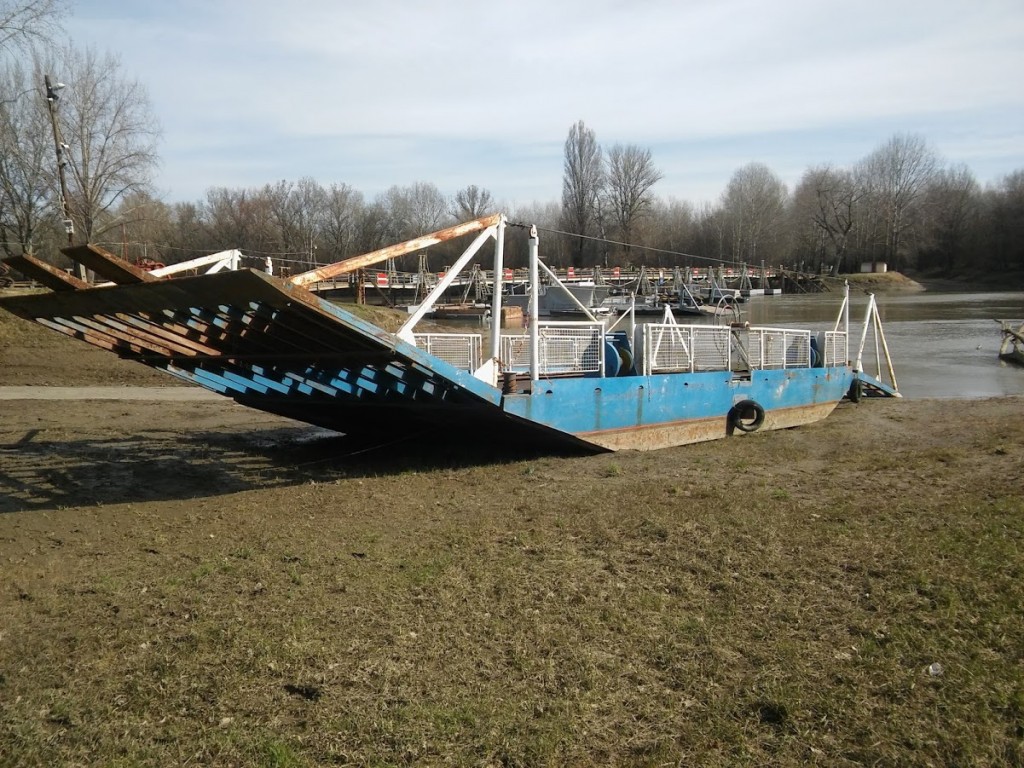Tid(y)Up - INTRODUCING THE FLEX CONCEPT TO THE PARTNERSHIP
27-06-2021
All partners knew from the beginning of the project that a floating international exhibition about river pollution is going to be one of the main communication outputs in Tid(y)Up. During the online partner meeting in May, 2021 the main concept behind FLEX was presented in great detail for the first time.

The PLASTIC Cup volunteers have great experience in giving used marine transport containers a second life (image: E. Kubinyi, PET Kupa)
The core idea
The Floating Exhibition refers to an awareness raising exhibition that is capable of swimming and thus to operate on the rivers of the Tid(y)Up project area (mostly the Danube and Tisza rivers). The Floating Exhibition (further referred as: FLEX) will raise awareness about plastic pollution and will provide scientific based results and ways to tackle this global problem. Attracting people to the river in order to learn about rivers opens up a wide array of possibilities in education, interactive learning and creative play. FLEX is going to be flexible and sustainable by all means. Its basic structure is modular, built of used marine transport containers, enabling knowledge-transfer not only on water but also by land. FLEX however, will spend most of its operative time on water, and will adapt to the particular conditions (weather, season, space) of each location. When riverborn, FLEX will fully exploit the proximity of the water in order to communicate its main message:
We use too much and reuse soo little.
As a consequence, the very fresh water resources that our survival depends on became endangered. It's time to make changes, to learn about water, plastics and start recycling/reuse everywhere with preventive approach. To prove its point in the first round, FLEX is going to be a recycled exhibiton. It will be built mostly of second-hand, recycled, reclaimed material. From the steel containers harboring the exhibit areas, through the interior design elements to the actual boat providing the buoyancy, FLEX will use and reuse tons of metal, plastic, wood, paper and glass. This in itself will make a visit worthwhile, but FLEX will use many other ways to reach the required impact on the audience.
The recycled boat keeping FLEX afloat
Giving a new life, new meaning and new function to a boat is always an inspiring project, especially when we talk about an old Tisza river ferry. These boats were once used all across the region to transport people, cars, livestock across the river. Not anymore. Recently, thanks to bridges and road developments, most of them have become useless and destined to a junkyard. To optimize cost-benefit ratio and minimize the environmental impact while designing the exhibition, FLEX will float on a once Tisza river ferry, serving as a knowledge transporter in the future. Some of the structural elements will remain intact, others will be redefined and redesigned in order to create the spaces that will make FLEX special.

Along the river TISZA, ferries are destined to a junkyard - but FLEX can give a boat another chance to set sail (image: Varga Dénes)
Visitors of FLEX
Visitors represent the most important flow through FLEX, but they are not the only ones. The exhibition will be a transit zone for four other things, namely plastic, water, driftwood and last but not the least, wildlife. The idea to invite NOT only people onboard, is leading to the appearance of some unusual structural elements. First, a litter trap in the front which will collect floating plastic waste and driftwood. The plastic will immediately become part of the exhibit and a secondary raw material for the onboard plastic workshop. The driftwood and organic waste will be used in multiple ways (fireplace, to boil water for hot tea and coffee, artistic upcycling). Besides plastic and driftwood, water will too, visit FLEX. A simple water mill will pump small quantities of river water enough to irrigate a roof garden for vegetables and herbal tea plants. This will attract bees, insects who will be provided not only with nectar, but with bee-hotels as well to lay their eggs. A small artificial island built on plastic bottles will harbor reeds and so will hopefully attract water birds like ducks when FLEX is on anchor. To make sure these unusual elements work together without unnecessary impact on the environment, FLEX is recycling ideas, materials, and functions.
Small budget, big impact
'In a lot of ways, FLEX is going to be small. Budget, boat size, capacity are all strictly limited. - said Attila D. Molnár, project manager and communication expert of the Tid(y)Up project - The rusty, maritime, industrial outlook will show very little of what is inside. But those who decide to enter, will find out that FLEX is a great place. It will be a great place to experience the beauty, power of the river, to face the risks of its pollution and to find out more about ways to stop the plastic flow and recycle the riverine waste.'

The idea is to build a modular exhibition area onboard (image: KÖR design studio)
Currently, the FLEX exists only on paper. But as design phase is slowly coming to an end and precise plans take form, soon construction - or in this case - reconstruction of the exhibition can start. And once ready, FLEX will set sail not only to communicate project results, but to see new places, meet new people and welcome new ideas. Information about the first FLEX-tour on the river Tisza and Danube is coming soon.
text by Anna Istenes, Gergely Hankó
#dtptidyup #interregtidyup #flex
